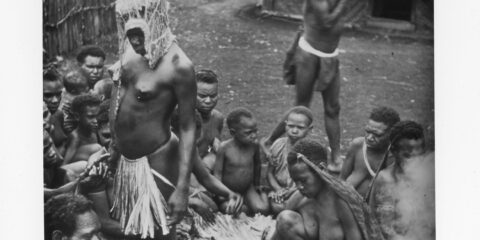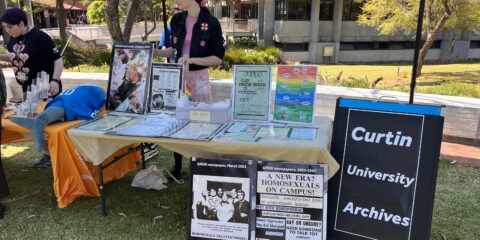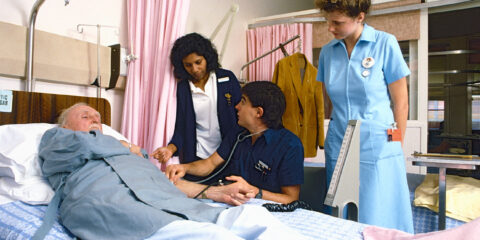Project update: architecture drawings
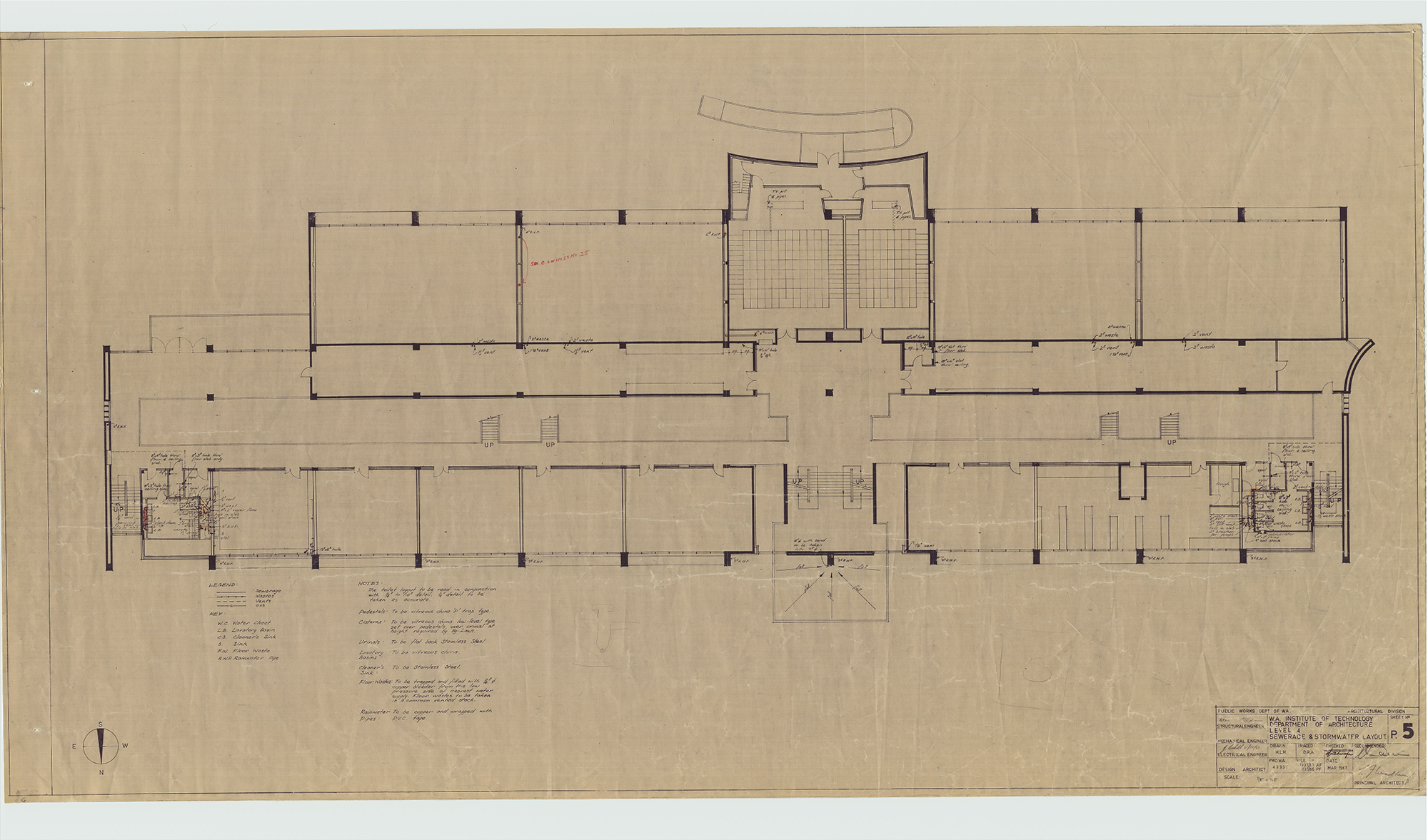
We have been working on a significant archive of original architectural drawings from the 1930s-1970s that require conservation treatment, description, cataloguing and archival rehousing in order to ensure their ongoing preservation.
Sometime in the 1980s, Duncan Richards, a heritage architect and staff member, began acquiring the drawings and plans of Western Australian architects who it could be argued have left a sizeable imprint on the built environment of Perth and Western Australian towns and cities.
Richards’ intention was to develop a teaching/learning/research archive to support the professional development of students, new architects and enhance appreciation for architectural heritage of Western Australia.
Some of the drawings are examples of architecture student assessments from our days as Perth Technical College. By collecting student work, Richards provided a reference point for the later career work of these architecture graduates.
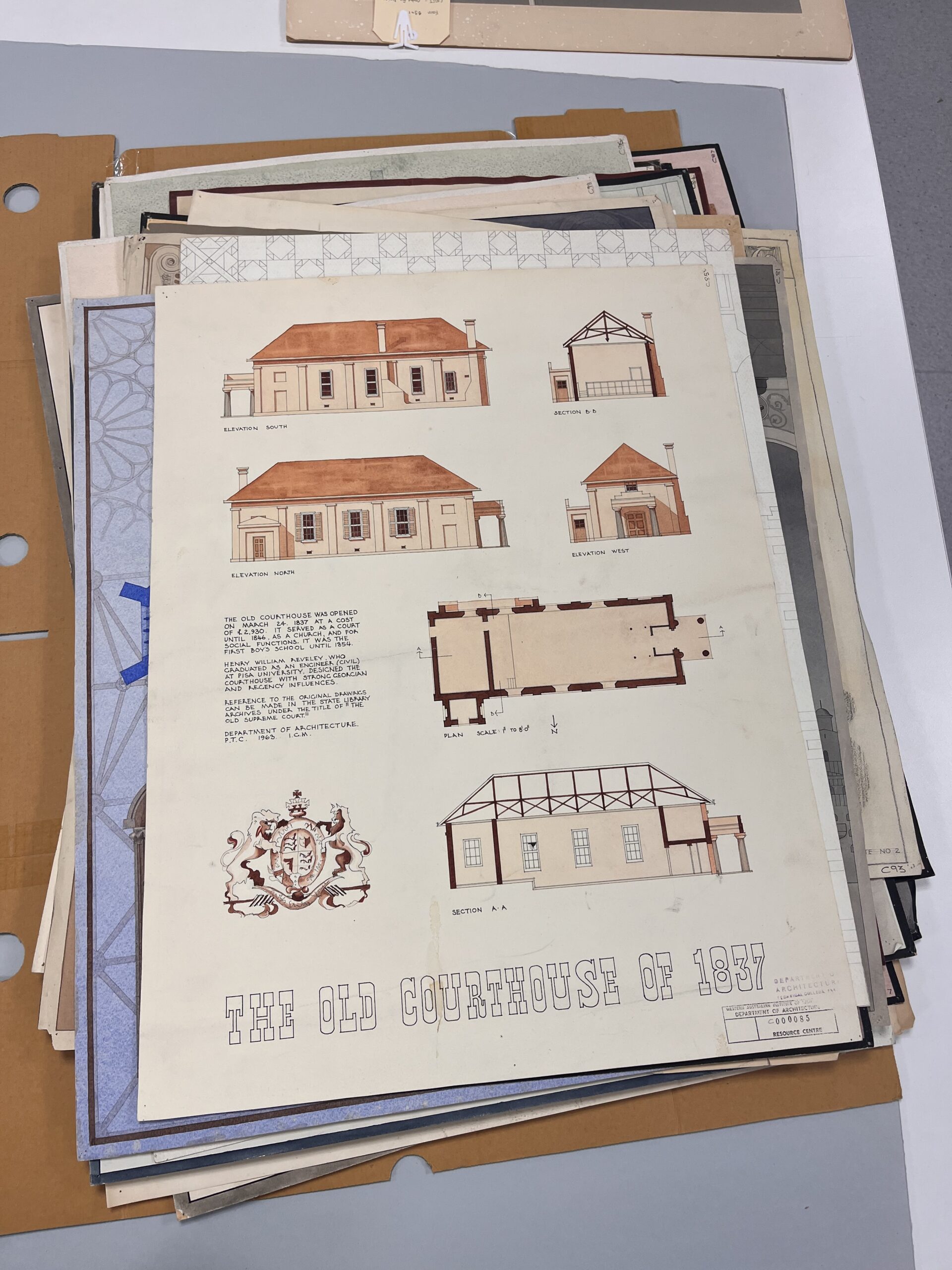
The description on the left side of this drawing on top completed by an architecture student notes “Department of Architecture, Perth Technical College, 1963”. The stamp on the bottom right corner reads “Western Australian Institute of Technology, Department of Architecture, resource centre”.
Responding to Richards’ vision the following architects, gifted their own drawings and collections to WAIT/Curtin.
· Brian Klopper
· Raymond Jones
· Marshall Clifton (these were transferred to the State Library)
A number of other architects also transferred their drawings to WAIT/ Curtin.
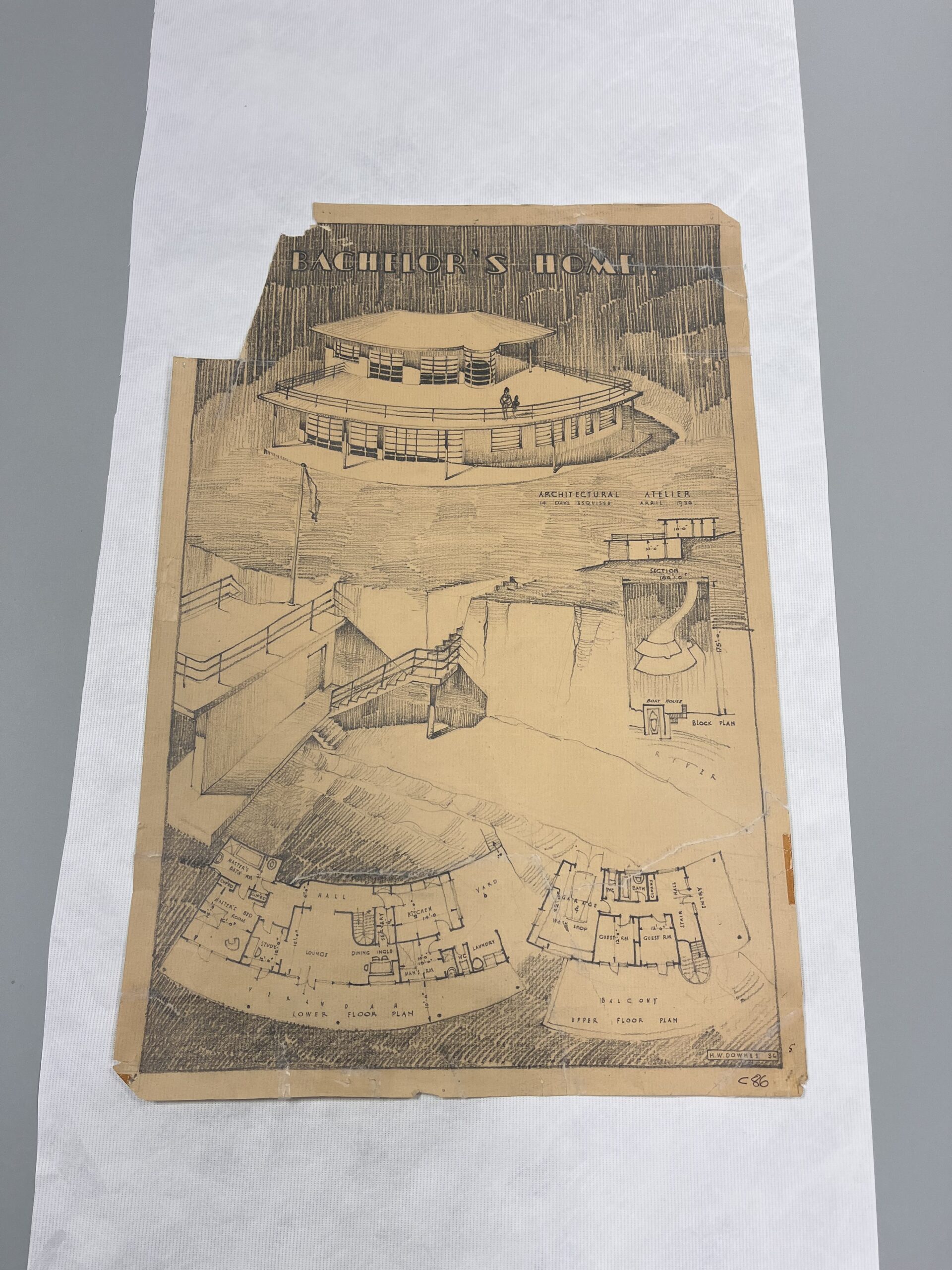
This architectural drawing from 1936 by Harry Wraith-Downes (1917-1943) required significant conservation work to piece it back together and safely remove adhesive tape that had left stains.
Harry Wraith-Downes was a lieutenant in the Australian army in the Second World War. He sadly perished as a prisoner of war in 1943.
The majority of the drawings are in good condition, with small amounts of conservation treatment needed to repair small tears and unfold creases. Fortunately they are free of damage from sunlight, mould and insects.
Once archival conservation, description and cataloguing has been completed for each drawing, they will be ready to be digitised. This will allow the originals to be stored safely and access mediated with the digital files instead, preserving the fragile drawings into the future.
